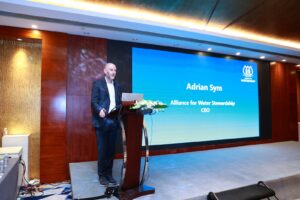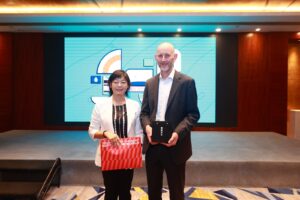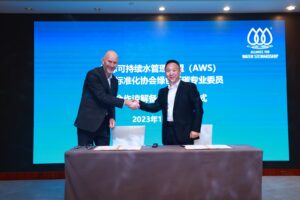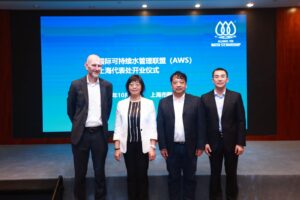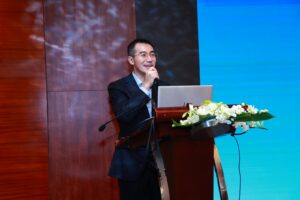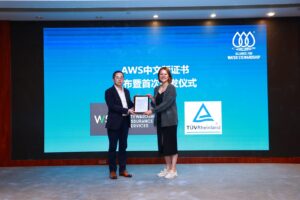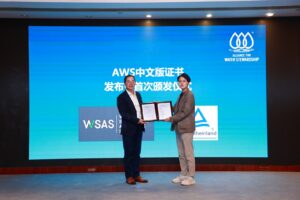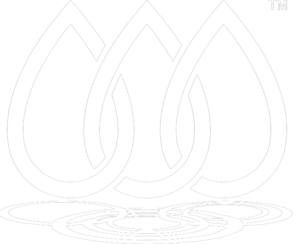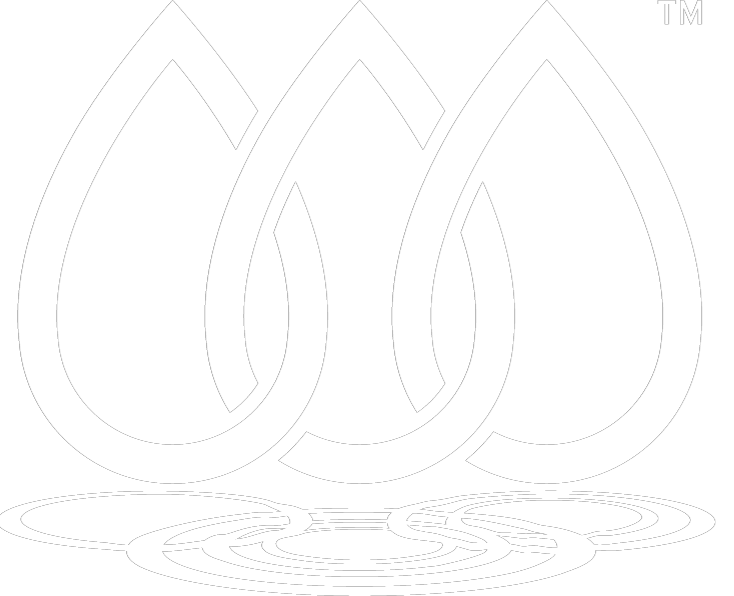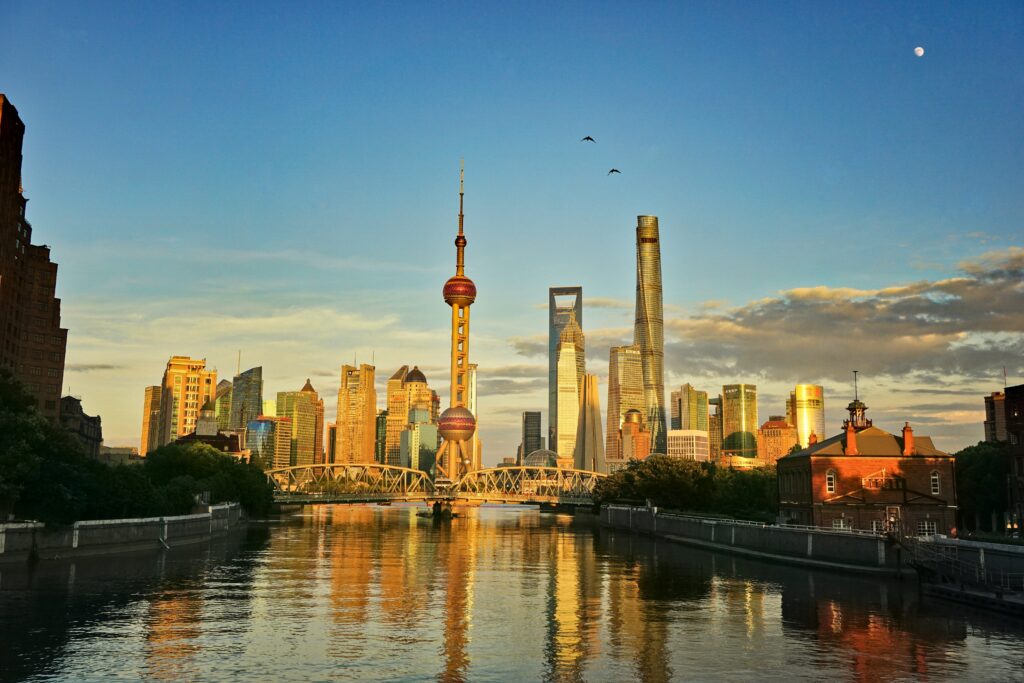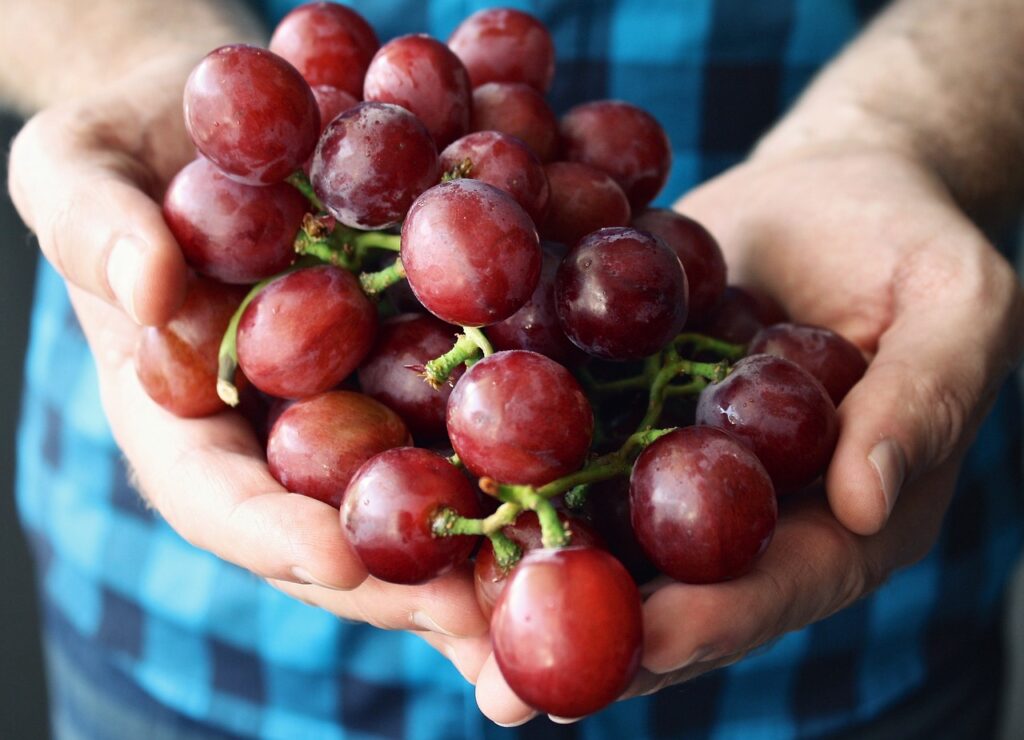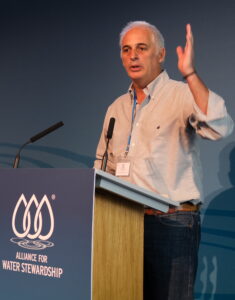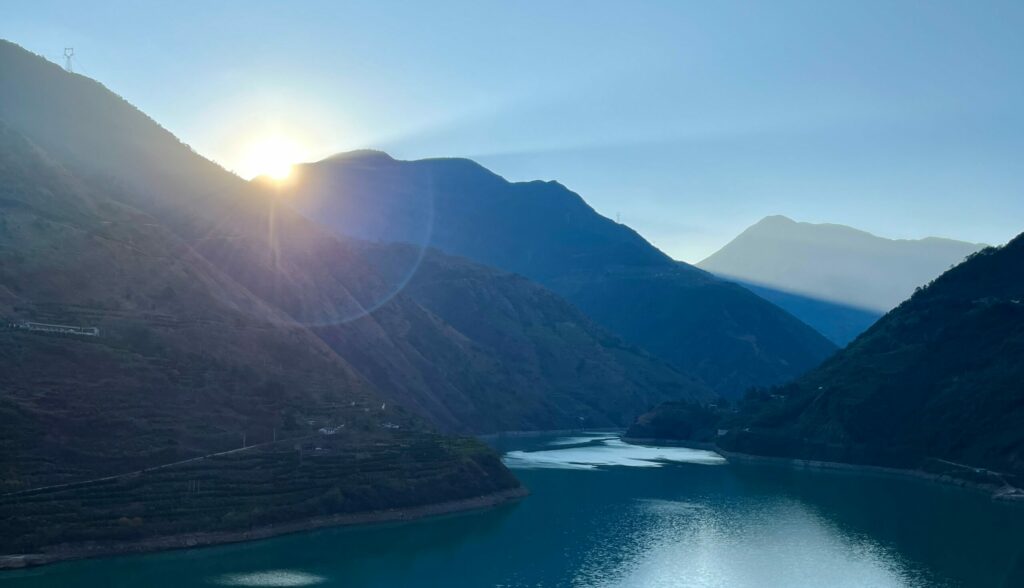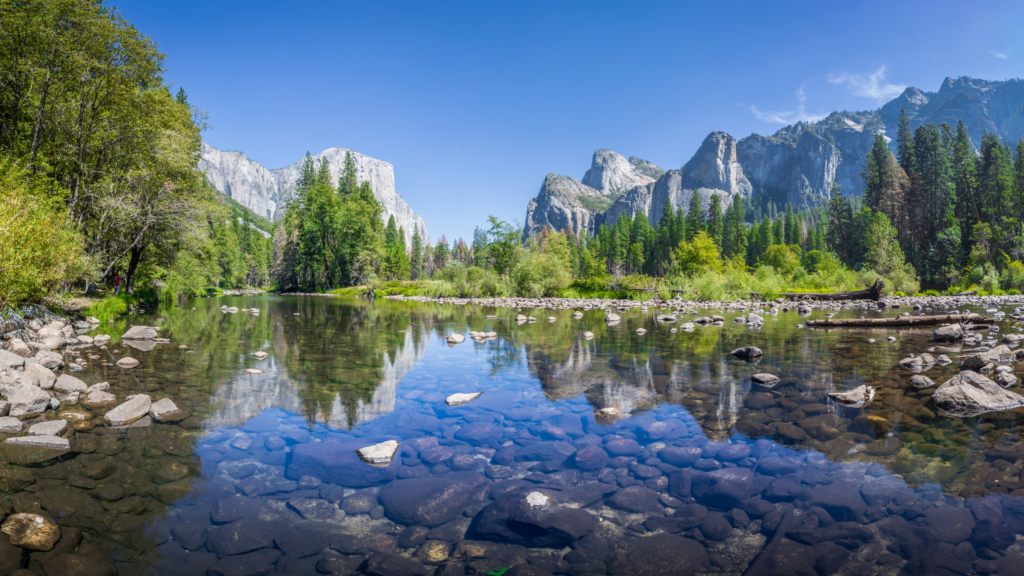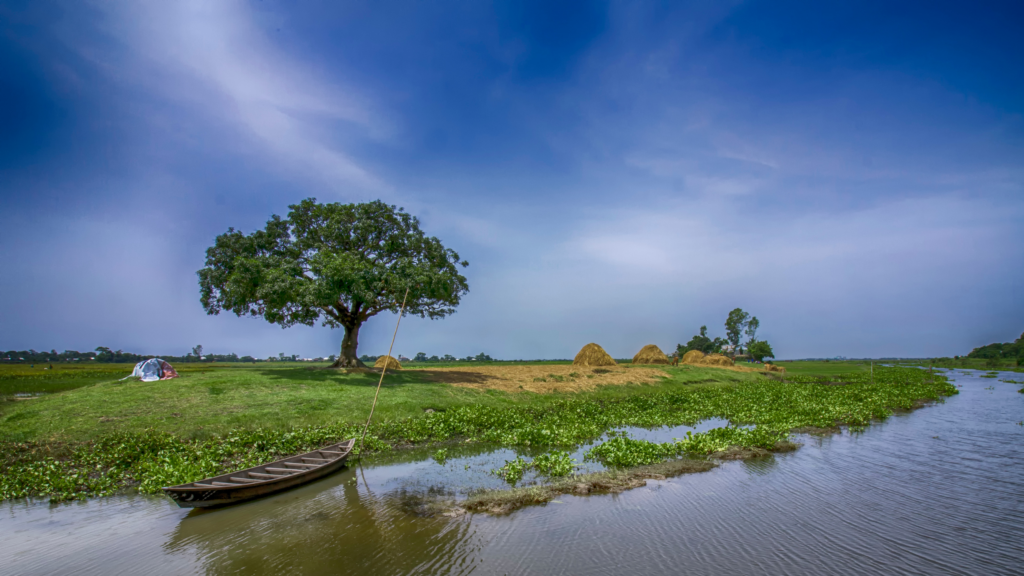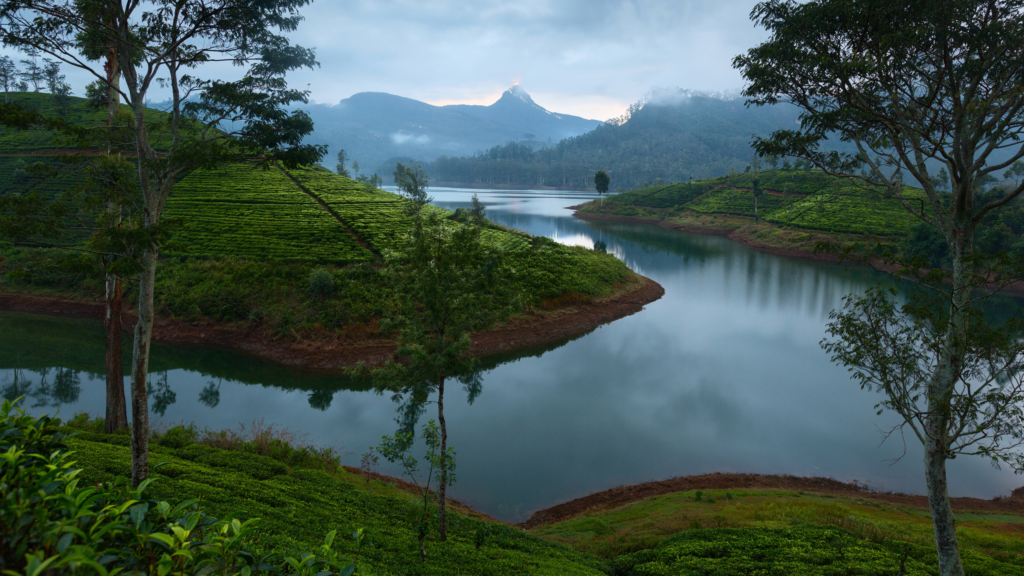The Alliance for Water Stewardship (AWS) Representative Office officially opened in the Jing’an District of Shanghai, China last week, on the eve of World Standards Day – 13 October 2023.
Participants from the public and private sectors, and NGOs gathered at the Swissotel Grand Shanghai to celebrate the launch of the newly established office for AWS, which aims to further ignite water stewardship in China.
The event kicked-off with remarks from Mr. Adrian Sym Chief Executive of AWS followed by Ms. Jing Li Director of Standard Innovation Development Divison at the Shanghai Municipal Administration for Market Regulation, the government agency responsible for oversight of the Representative Office. A video presentation from Mr. Ma Jun, head of the Institute for Public and Environmental Affairs and former member of the AWS International Standard Development Committee, highlighted the country’s support for water stewardship efforts. Mr. Wenwei Ren, the Shanghai Regional Head of the World Wildlife Fund for Nature (WWF) in China also shared insights into how their organisation can support others in adopting responsible water practices. The first half of the event concluded with the signing of a new Memorandum of Understanding (MOU) between AWS and Mr. Wei Bao on behalf of the China Association for Standardization Green and Low Carbon Committee.
The second half of the event explored the AWS Standard, how the certification process works and introduced the AWS Representative Office and its strategy, starting with a presentation from Mr. Jason Lu, AWS China Representative. Next, Mr. Rong Cai, a representative from China National Institute of Standardization provided local context around the development of water stewardship standardisation and how they can work with AWS towards further progress. Mr. Weimin Fang, Greater China Systems Vice President of TÜV Rheinland, which is AWS’s key partner in providing assurance services in China, also spoke on the growth of AWS Certification in China and how they hope to see further interest from companies.
It is evident that water stewardship is already gaining traction in China. Globally, there are more than 270 sites certified to the AWS Standard and around 230 in the process of seeking AWS certification. In China, there are already 34 AWS certified sites, making it the country with the second-largest number of AWS certified sites in the world. The principles and contents of AWS Standard were also adopted into China’s national standard for water stewardship in 2020. To bring these achievements to life, representatives Mr. Michael Che, the Great China Supply Chain Vice President of Ecolab and Ms. Shin Zhao, the Head of ESG at Luxshare Precision Industry shared their experiences in achieving AWS Certification. AWS certificates were also presented in Chinese – the first AWS certificates to be presented in a language other than English – to these two companies.
The new AWS Representative Office will also be working to jumpstart water stewardship action at scale in China through the AWS Impact Accelerator. This programme is designed to bring multiple water users within a single catchment together to help build capacity and gather information that can be shared to support sites on their water stewardship journey. AWS will soon be launching its first cohort in the Suzhou/Shanghai region. To learn more about this work visit a4ws.org/impact-accelerator.
“China has been at the forefront of the development of water stewardship since the establishment of AWS. The opening of our China Representative Office with the support of key government agencies marks a new chapter in which we will be able to build the institutional relationships needed to accelerate uptake and impact of water stewardship in China.”
Mr. Adrian Sym, Chief Executive, Alliance for Water Stewardship (AWS)
“The opening event was a success, which not only laid the foundation for the Representative Office's business development but also provided an opportunity for stakeholders in water stewardship to share ideas and insights.”
Ms. Jing Li, Director of Standard Innovation Development Division, Shanghai Municipal Administration for Market Regulation
“The opening event greatly increased everyone's understanding of the states and prospects of the cooperation between AWS and various stakeholders, which increased people’s interest in working with AWS. This created a good start for the future work of the representative office."
Mr. Jason Lu, China Representative, Alliance for Water Stewardship (AWS)
Learn more about our Representative office and our work in China by visiting our microsite in Chinese.
Photos from the event
